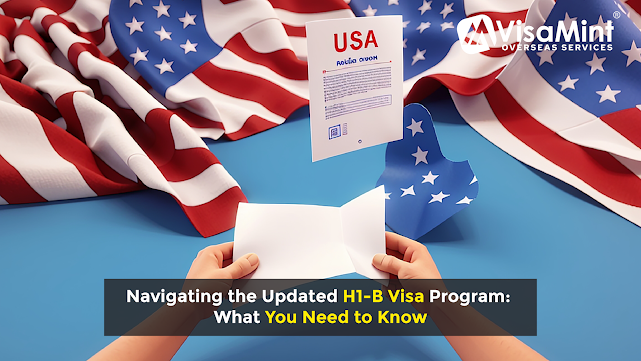Navigating the Updated H1-B Visa Program: What You Need to Know
For
individuals aspiring to make the United States their new home or seeking
top-notch educational opportunities, pursuing employment or education in the
country might be the most promising path to achieving their dreams. However,
recent changes to the H1-B visa program have introduced a set of considerations
that applicants need to be aware of. In this article, we'll delve into the key
modifications and how they might impact your journey to the U.S.
Key Considerations in the H1-B Visa
Program Updates:
Strengthening Eligibility Criteria:
In an effort
to prevent visa fraud and abuse of the system, U.S. immigration agencies are
introducing significant modifications to the H1-B visa program. This initiative
aims to address the practice of certain intermediaries submitting multiple
registrations for a single individual to secure a guaranteed U.S. Work Permit.
While the implementation of these changes will take some time, one of the core
aspects is the establishment of specific eligibility criteria for the selection
process. It's crucial to note that applications not meeting these criteria will
not be approved. These new regulations are expected to provide greater support
for individuals pursuing entrepreneurial dreams and may also benefit
international students.
Relocation and Reporting
Responsibilities:
When an
individual holding an H1-B visa undergoes a change in their work location, it
becomes the sponsoring employer's responsibility to inform the U.S. Citizenship
and Immigration Services about the relocation within the United States. This
process necessitates the submission of an updated H-1B visa application, which
includes a new Labor Condition Application and a fresh H-1B petition. However,
if the employee is relocating within the same city, this step is not mandatory.
Failing to comply with this requirement may lead to a review of the employee's
legal status, potentially resulting in uncertainty and scrutiny.
Employment Authorization for Spouses:
The
government has a provision allowing spouses of H1-B visa holders to seek
employment, provided that the H1-B recipient is in the process of obtaining a
green card or has been granted a visa extension beyond 6 years. This development
is particularly significant for a substantial number of Indian-origin women who
fall under the H-4 visa category. They have been granted Employment
Authorization Documentation (EAD) rights, allowing them to work. This rule was
implemented in 2015 in response to challenges faced by the Indian diaspora in
obtaining green cards. Presently, individuals within the Indian diaspora
holding H-4 visas can enjoy employment privileges.
Conclusion:
As the
landscape of the H1-B visa program undergoes significant changes, it's
imperative for prospective applicants and current holders to stay informed and
adapt to the new regulations. Whether you're seeking to establish yourself in
the U.S. for employment or educational opportunities, understanding these
updates will be crucial to a successful transition. If you're in need of expert
guidance and support, VisaMint Overseas
Services, the best Immigration Firm
for USA Visa in India is here to help you navigate the path to
international travel and realize your dreams in the United States.
#H1BVisa #Immigration #VisaUpdates
#WorkVisa #USImmigration #LegalUpdates #USVisa #WorkInUSA #VisaPolicy #GlobalTalent
#VisaProcess #InternationalWorkers #USWorkforce #WorkInAmerica #LegalNews




Comments
Post a Comment